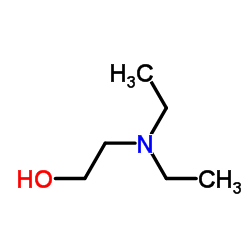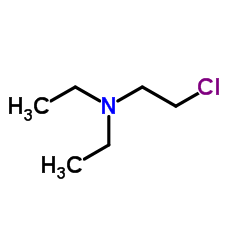硫蒽酮
更新时间:2024-01-02 12:51:01

硫蒽酮结构式

|
常用名 | 硫蒽酮 | 英文名 | Lucanthone |
|---|---|---|---|---|
| CAS号 | 479-50-5 | 分子量 | 340.48200 | |
| 密度 | 1.184g/cm3 | 沸点 | 512.4ºC at 760 mmHg | |
| 分子式 | C20H24N2OS | 熔点 | 195-196ºC | |
| MSDS | N/A | 闪点 | 263.7ºC |
硫蒽酮用途Lucanthone 是 Apurinic 内切核酸酶-1 (APE-1) 的内切核酸酶抑制剂。 |
| 中文名 | 硫坎酮 |
|---|---|
| 英文名 | lucanthone |
| 中文别名 | 1-((2-(二乙基氨基)乙基)氨基)-4-甲基硫杂蒽-9-酮 | 硫蒽酮 |
| 英文别名 | 更多 |
| 描述 | Lucanthone 是 Apurinic 内切核酸酶-1 (APE-1) 的内切核酸酶抑制剂。 |
|---|---|
| 相关类别 | |
| 靶点 |
APE-1[1] |
| 体外研究 | 硫蒽酮是一种新的自噬抑制剂,可诱导组织蛋白酶D介导的细胞凋亡。为了研究硫蒽酮的抗癌活性,通过MTT测定法测量细胞活力。硫蒽酮在一组七种乳腺癌细胞系中以相似程度降低细胞活力。此外,直接比较显示,氯喹酮在降低乳腺癌细胞存活率方面明显比氯喹(CQ)更有效,平均IC50为7.2μM,而CQ为66μM。通过ATPlite测定和台盼蓝排除测量两种代表性细胞系(MDA-MB-231和BT-20)中的细胞活力揭示了可比较的结果[2]。 |
| 细胞实验 | 通过MTT测定评估细胞活力。将细胞以每孔10,000个细胞接种到96孔微量培养板中并使其附着24小时。然后用硫蒽酮(0,0.5,1,5,10,20和40μM),氯喹,伏立诺他或其组合处理细胞72小时。药物处理后,加入MTT并使用BioTek酶标仪定量细胞活力。还通过使用ATPlite测定系统和台盼蓝排除法测量ATP水平来确定对细胞活力的影响。体外药物暴露后的促细胞凋亡效应通过碘化丙啶(PI)染色和亚G0 / G1 DNA含量的荧光激活细胞分选(FACS)分析来量化[2]。 |
| 参考文献 |
| 密度 | 1.184g/cm3 |
|---|---|
| 沸点 | 512.4ºC at 760 mmHg |
| 熔点 | 195-196ºC |
| 分子式 | C20H24N2OS |
| 分子量 | 340.48200 |
| 闪点 | 263.7ºC |
| 精确质量 | 340.16100 |
| PSA | 60.58000 |
| LogP | 4.54980 |
| 蒸汽压 | 1.3E-10mmHg at 25°C |
| 折射率 | 1.638 |
| 储存条件 | 2-8℃ |
| 1-(2-Diethylamino-ethylamino)-4-methylthiaxanthon,Lucanthon |
| Lycanthone |
| thioxanthone |
| 1-(2-diethylamino-ethylamino)-4-methyl-thioxanthen-9-one |
| 1-<2-Diaethylamino-aethylamino>-4-methyl-thioxanthenon-(9) |
| 1-[[2-(Diethylamino)ethyl]amino]-4-methyl-9H-thioxanthen-9-one |
| 1-(2-Diaethylamino-aethylamino)-4-methyl-thioxanthen-9-on |

![1-chloro-4-methyldibenzo[b,e]thiin-10-one结构式](https://image.chemsrc.com/caspic/205/57450-55-2.png) CAS号57450-55-2
CAS号57450-55-2 CAS号100-36-7
CAS号100-36-7 CAS号54236-49-6
CAS号54236-49-6 CAS号100-37-8
CAS号100-37-8 CAS号18858-06-5
CAS号18858-06-5 CAS号7745-92-8
CAS号7745-92-8 CAS号34981-38-9
CAS号34981-38-9 CAS号412339-71-0
CAS号412339-71-0 CAS号108620-60-6
CAS号108620-60-6 CAS号100-35-6
CAS号100-35-6
